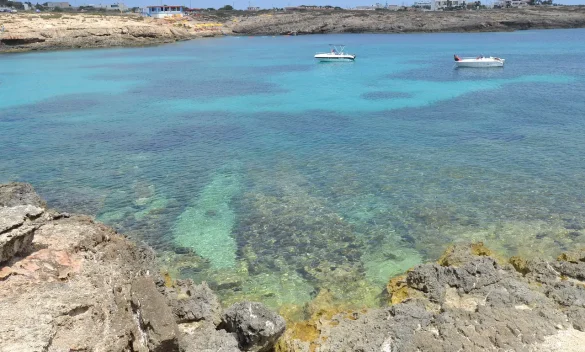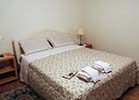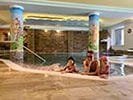Lampedusa where to sleep, how to get there and the beaches

Isola delle Pelagie
A holiday in Lampedusa represents the desire of anyone who has a love for the sea: this island located between Italy and Africa is lapped by the clearest waters of the Mediterranean Sea.
Lampedusa
Closer to Africa than to Italy, the small island of Lampedusa in the Pelagie archipelago acts as a link between two worlds.
Unlike the neighboring island of Linosa, Lampedusa has no volcanic origin but rises on a limestone base: the landscape has an arid appearance, with little vegetation, while the white sandy beaches evoke typical Caribbean atmospheres.
The surrounding waters are of an incredible blue tone; thanks to the magnificent backdrops and the wealth of marine flora and fauna, Lampedusa is one of the favorite places in Italy (and not only) for scuba diving enthusiasts. Even turtles are attracted to the island and have chosen the picturesque Beach of Rabbits as a place for spawning.
This little corner of paradise has a nature reserve that extends over 320 hectares: immersed in a nature of extraordinary beauty, you will forget worries, deadlines and conflicts. A dream holiday for anyone who loves the sea and quiet rhythms.
What to see in Lampedusa
You will not find internationally renowned museums and monuments, nor huge churches in Lampedusa: the attractions to visit are small buildings or natural places that carry a deep meaning for the local inhabitants.
A place of great history and charm is the Sanctuary of Cala Madonna, a small church carved into the rock where the monthly celebrations in honor of the Blessed Virgin Mary of Porto Salvo take place: it can be reached on foot following the road that leads to the beach of Conigli. The church is located in a very charming natural environment, surrounded by a lush garden and some caves carved into the rock that in the past were probably used as a natural refuge.
Also the Blessed Virgin Mary of Porto Salvo, patron saint of the island, is honored by a marble statue inaugurated in 1993, positioned on top of a hill as to welcome sailors who have come to Lampedusa.
Casa Teresa seems almost merged with the landscape; it is the largest, best preserved and famous dammuso of the island. The dammusi are the traditional stone houses of Lampedusa and Linosa, with their distinctive domed roof that was used to collect rainwater. Purchased by the Region of Sicily, Casa Teresa has been transformed into a museum with free admission to learn about the rural lifestyle of the first settlers of the island.
For those looking for romance and spectacular sunsets, or have a passion for navigation, the Lighthouse of Capo Grecale is a must. It is located in a panoramic position overlooking the sea along the northern coast of the island. The lighthouse is also the point of arrival or departure of a panoramic road of 8.5 km with numerous opportunities to take pictures of incredible beauty.
Returning to the main centre of the island, a walk along Via Roma is an essential stop. This main street of the city becomes pedestrian in the evening hours and is lined with shops, bars and restaurants.
One of the most significant attractions in the city is the Sea Turtle Center, an organization run by volunteers that takes care of the recovery of turtles accidentally caught by fishing equipment. The center also houses an exhibition area open to the public during the summer months.
Other points of interest include the obelisk Pomodoro, a bronze sculpture made by the renowned sculptor Arnaldo Pomodoro; the Gate of Europe, a monument in memory of the fallen in the sea; the fountain Cascella, a marble sculpture with extravagant shapes, also dedicated to fishermen.
Lampedusa is also an excellent destination for those who wish to combine sea and trekking. The forest area called Forestale, dedicated to reforestation, offers a series of paths surrounded by greenery. These routes, from easy to more challenging, offer spectacular views from the highest cliffs of the island.
- Isola delle Pelagie
- Lampedusa
- What to see in Lampedusa
- Beaches of Lampedusa
- Diving in Lampedusa
- Best hotels in Lampedusa
- How to get to Lampedusa
Beaches of Lampedusa
The beaches of Lampedusa are mainly located along the south-east coast, while the north-west, characterized by a considerable height, is inaccessible. During your holiday in Lampedusa, explore the coast to discover the beach you prefer and do not miss the opportunity to take a boat excursion to fully admire the beauty of this paradise island.
Rabbit Beach
The Rabbit Beach is the most famous of Lampedusa, a magnificent stretch of fine sand set in one of the most fascinating bays of the Mediterranean. To reach it, follow a dirt path on foot, which starts from the road to Capo Ponente, near a kiosk.
This area is a nature reserve, since the beach has long been the place where caretta caretta turtles lay their eggs. While swimming in the surrounding waters, you might even be lucky enough to spot these cute animals in their natural habitat.
Rabbit Island
Opposite the beach is Isola dei Conigli, one of the most photographed attractions of Lampedusa: this small uninhabited island, with its steep rocky walls, offers a very impressive spectacle.
The island is close enough to the coast to be reached by swimming or even on foot, as the channel separating it from the mainland in some places is very low. However, the high coastline makes the hinterland inaccessible.
On the island there are some rare animal species, including the royal seagull and a particular type of lizard called psammodromus algirus. In the waters behind the island there is a submerged natural arch inhabited by colonies of orange madrepores, colored sponges, red shrimps, scorpion fish and moray eels.
The Origin of Rabbit Island Name
On some occasions, depending on the tides and currents, Rabbit Island is connected to the coast by a narrow isthmus of sand. This is a rare but possible event.
It is said that this event is the name of the island. In the past, a colony of rabbits managed to reach the island thanks to the sand isthmus. After the isthmus disappeared due to the tides, the rabbits could not return to Lampedusa and remained on the islet.
In the absence of predators, their population grew uncontrollably, thus justifying the name “Rabbit Island”.
Other Beaches in Lampedusa
One of the most popular beaches on the island is Guitgia Beach, easily accessible by public transport or on foot from nearby hotels. It is ideal for those looking for comfort and for those traveling with small children.
If you are looking for tranquility, Cala Pulcino Beach is your best choice. It is one of the least crowded beaches on the island, characterized by a large area of gravel and sand without services, which presents a wild aspect. The difficulty of reaching it by land discourages many tourists, but the beauty of the place largely repays the effort. The area is rich in sea caves.
A good option between comfort and scenic beauty is Cala Croce, a natural cove east of Guitgia Beach. Protected from the winds, it offers an almost always calm sea.
Thanks to its beautiful blue and the extraordinary transparency of its waters, Tabaccara is called the natural pool of Lampedusa. Viewed from a distance, it seems that boats float on the water instead of floating! This beach is accessible only by sea, but you can admire it from above following the path that leads to the Beach of Rabbits.
For lovers of snorkeling, the Dead Sea Beach is ideal, with its rocky bay and the picturesque underwater cave.
Other must-see beaches in Lampedusa include Cala Spugna (also known as Maluk), Cala Greca, Cala Galera, Cala Madonna and Porto N’Tone.
Diving in Lampedusa
Lampedusa is a popular destination for diving lovers: on the island there are various diving centers that provide the necessary equipment and organize exciting diving sessions.
The most famous diving sites include: Punta Parrino, Punta Cappellone, Taccio Vecchio and the Levante shoal. Diving near the Island of Rabbits, you can see at a depth of 15 meters the statue of Our Lady of the Sea, linked to a touching history of solidarity. The statue was generously donated by the journalist Roberto Merlo as a sign of gratitude to the community of Lampedusa for the assistance received during his accident at sea.
Best hotels in Lampedusa
The predominant economic activity on the island of Lampedusa is tourism, which translates into a variety of accommodation options. However, it must be borne in mind that the island is a rather refined destination and, consequently, the prices of hotels are higher than in other locations in Sicily. To find affordable accommodation, it is advisable to book in advance.
Hotels and holiday homes in Lampedusa are mainly concentrated in the south-east of the island, especially around the beach of Guitgia and near the port and the airport. Choosing to stay in this area guarantees access to all the necessary facilities.
There are no hotels in the immediate vicinity of Isola dei Conigli, but there are many options between apartments, villas and residences.
How to get to Lampedusa
The easiest way to reach Lampedusa is to take a flight: the island has an airport that offers direct connections, including low-cost flights, with the main Italian cities. However, it is important to note that some flights are only available in certain seasons of the year.
Flights to Lampedusa
Direct flights to Lampedusa are operated by airlines such as DAT, Volotea, Vueling Airlines, Wizz Air and easyjet, departing from the airports of Bologna, Catania, Milan, Naples, Palermo, Rome, Turin, Venice and Verona.
Ferries to Lampedusa
An alternative way to reach Lampedusa is to take a ferry or hydrofoil from Porto Empedocle, a town located a few kilometers from Agrigento. With the same ferry you can also reach the island of Linosa.
Once on the island, a public transport service is available, but it is advisable to rent a car or a scooter for added convenience.
ACCOMODATIONS NEAR LAMPEDUSA
Explore the best accommodation facilities near Lampedusa, between Hotels, B&B and Apartments, selected based on thousands of verified reviews.
Last updated on: 25/08/2023 00:45:36
 BUDGET ACCOMODATIONS
BUDGET ACCOMODATIONS HOTEL
HOTEL APARTAMENTS
APARTAMENTS HOTEL FOR FAMILIES
HOTEL FOR FAMILIES